New Zealand Backyard & Garden Design Ideas Magazine Featured Article
Uncover the unique qualities and characteristics of plants and you will soon discover they have more to offer than just their looks
Most landscape designers and gardeners agree that plants play a vital role in the overall aesthetics of a garden. They create the essential character or spirit of a place, and they excite the senses and capture a mood. Plants dazzle us with their fabulous foliage, eye-catching flowers and unique forms. designing and creating a garden is a very rewarding exercise. as designers, we use our trained eye and experience to manipulate outdoor spaces and create stunning gardens for people to enjoy. Plants are an essential tool in garden design. We look for plants whose shape contributes to a particular design or whose foliage or flower matches the desired colour scheme.
Creating stunning and sculptural planting schemes can seem like a daunting task when first starting out. There are many stunning plants to choose from and garden styles to be inspired by. There are no hard-and-fast rules with what plants to use and how to use them, but there are some basic principles to follow when putting together plant combinations that will give pleasing and harmonious results for you.
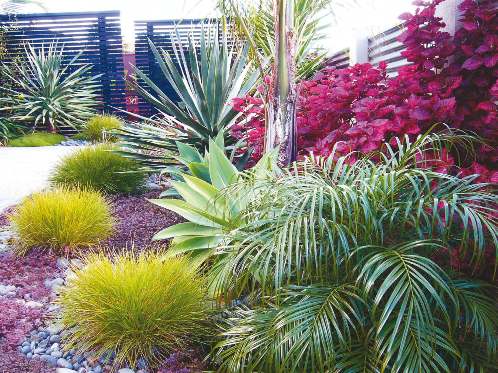
This entrance garden showcases acarefully selected group of plants withinteresting foliage and an emphasis onred as an accent colour. Photo courtesy of Flourish Garden Concepts Ltd.
Right plant, right place
Selecting the right plant for the right place determines the success or failure of any garden. This means taking stock of your garden’s aspect, soil type and locality and matching the plant to the site conditions. choose plants that suit the site; this will save you valuable time and money and avoid any disappointing results.
it’s also very important to consider the ultimate size of all plants before buying them. Many people make the mistake of planting trees and shrubs that eventually become too large for the area, which ends up causing a lot of headaches for you and your neighbours further down the track.
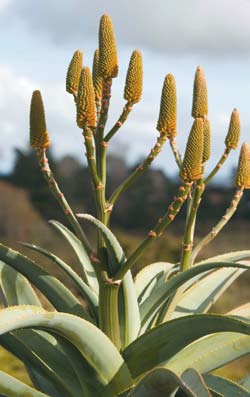
Aloe thraskii makes a fantastic feature tree. Its unique form and candle-like flowers provide year-round structureand interest. Photo courtesy of FlourishGarden Concepts Ltd.
Plant qualities
Every plant has a particular design quality. The key to successful planting involves taking into account everything that plants can offer — flower colour, foliage form and texture.
colour is an essential part in creating a particular mood in the garden. colour can be created not only in flowers but by using the leaves, fruit, berries and plumes of a plant. it can also be used to influence the viewer’s perception of space and distance. For instance, warm colours such as orange, red and yellow seem to advance while cool colours of blue and green retreat into the background.
Use cool colour themes in small gardens to give the illusion of more space and distance. They naturally also have a more restful, calming effect. For a dramatic, energising effect, warm or hot colour schemes are great for larger gardens as they can make it seem more intimate. stunning tropical-style gardens can be created when you combine the primary colours of red, yellow and shades of orange with bold green foliage plants.
designing with colour requires some knowledge about the basic theory of – colour harmonies, contrasts and single colour themes —-for a truly sublime result. you can explore and experiment with different colour combinations in your garden, much of which will depend on the kind of effect you want to achieve.
Form describes the overall shape or growing habit of a plant. For example, some plants are rounded or strappy in shape, while others are columnar, vase-like or bun-shaped. They can be planted in large groups to highlight individual forms, planted as a singular specimen as a striking statement or planted in contrasting groups.
Texture becomes apparent when you get up close to a plant. Plants with interesting physical or visual textures need to be placed in positions where they will be noticed, such as at the front of a garden border, near an entrance way or in a feature pot.
Plants can be displayed in a multitude of interesting combinations to suit any number of garden styles. it’s useful to find a good balance between a combination of foliage and colour for a garden with year-round beauty.
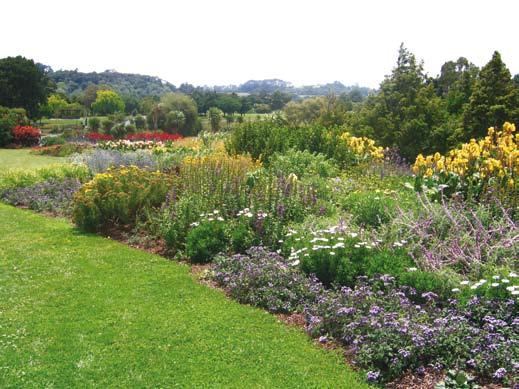
An example of a complementary colour harmony using blue to purple colouredflowers combined with yellow floweringperennials. Photo
Plant functions
While plants are decorative and highly valued for their aesthetic qualities, they also provide many other uses within the landscape. groups of plants may be used architecturally to form walls or living hedges for a sense of enclosure, to define boundaries, provide screening or create windbreaks or canopies for other plants. They also are used as shelter for animals, firewood, wood carving and food production.
a single tree can provide much-needed shade to screen the hot summer sun while allowing sunlight to filter through bare branches in winter for a type of climate control. a tall, thick row of shrubs bordering a road can reduce noise and block out or diffuse street lights or glare from car lights at night. Mature trees can also remove and trap pollutants from the air as well as improve air quality when planted in urban areas.
if you take the time to understand plants, you will soon discover and learn to appreciate them for all they have to offer. recognising the individual qualities of plants will not only give you a better understanding of them, but will enable you to use them in your garden to their full potential and create stunning results all year round.
Sandra Batley is a Landscape Designer working in the greater Auckland region. For more information about Sandra and her business Flourish – click here
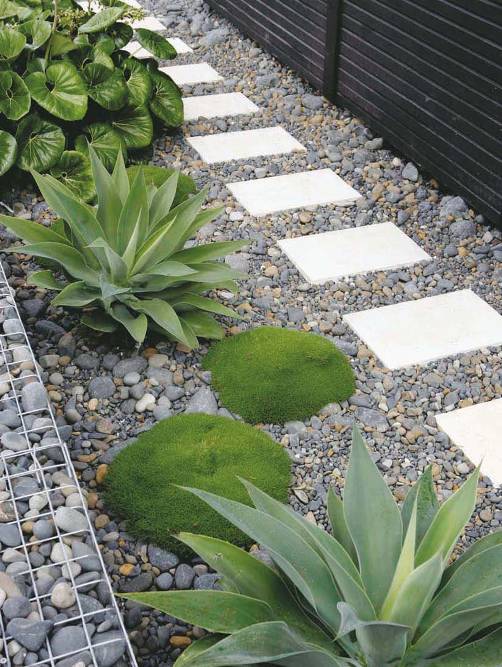
Plants with interesting foliage can begrouped together to show off and contrasttheir individual forms, creating a simpleminimalist look. Photo courtesy ofFlourish Garden Concepts Ltd.
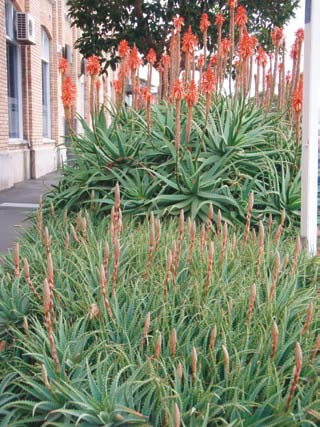
Succulents can provide a point ofinterest all year round with theirdramatic foliage, beautiful flowers andsharp forms. Photo courtesy of WairereNursery Ltd.
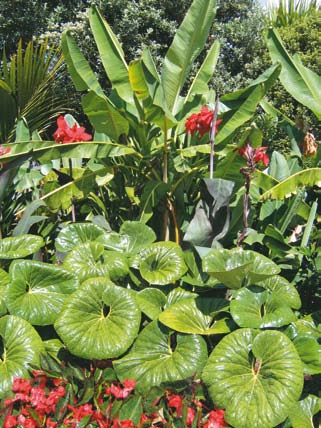
These bold and colourful foliage plants arecharacteristic of a tropical garden and are ideal for frost-free gardens. Photo courtesy of Kirsten Sach Landscape Design Ltd.







